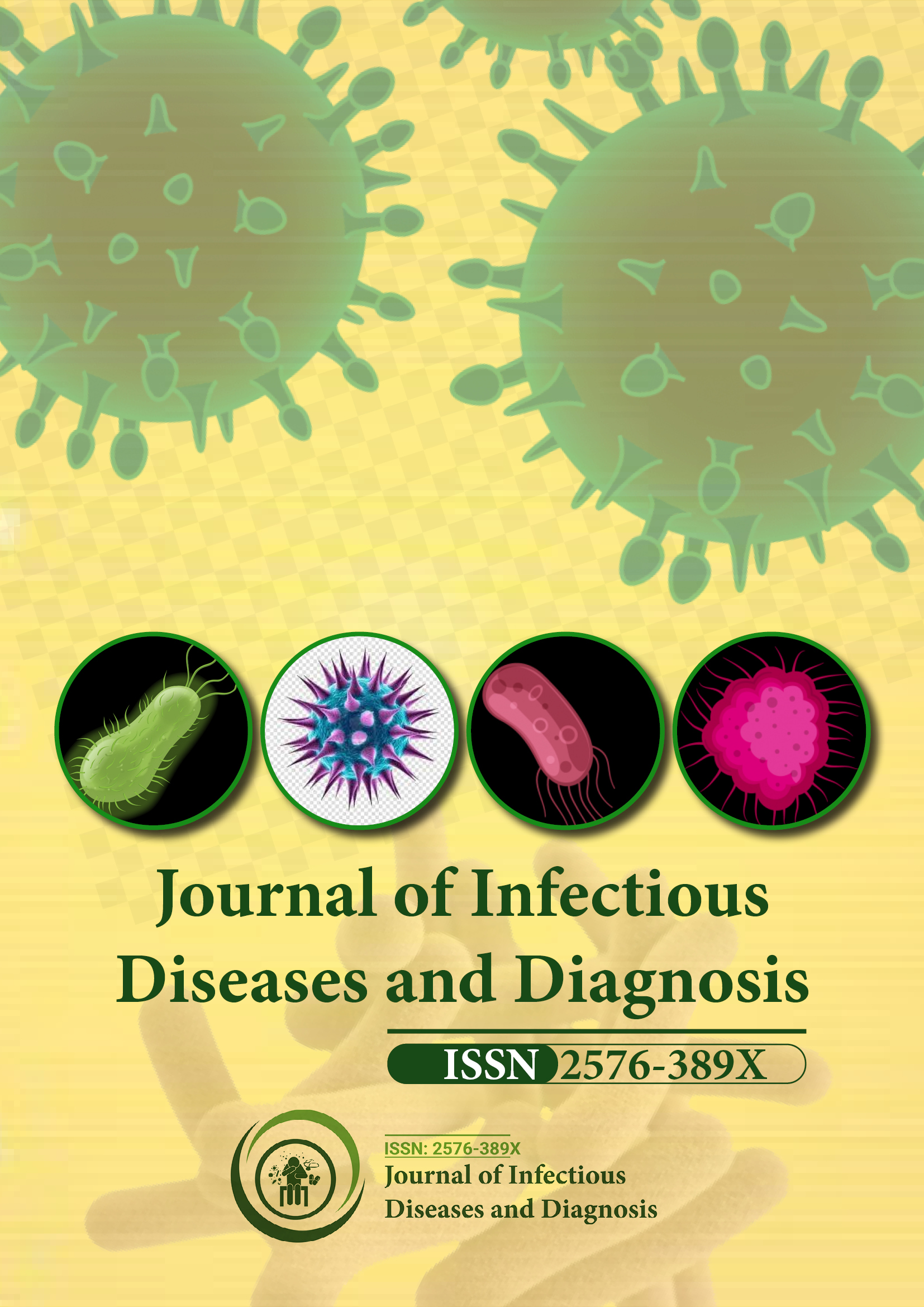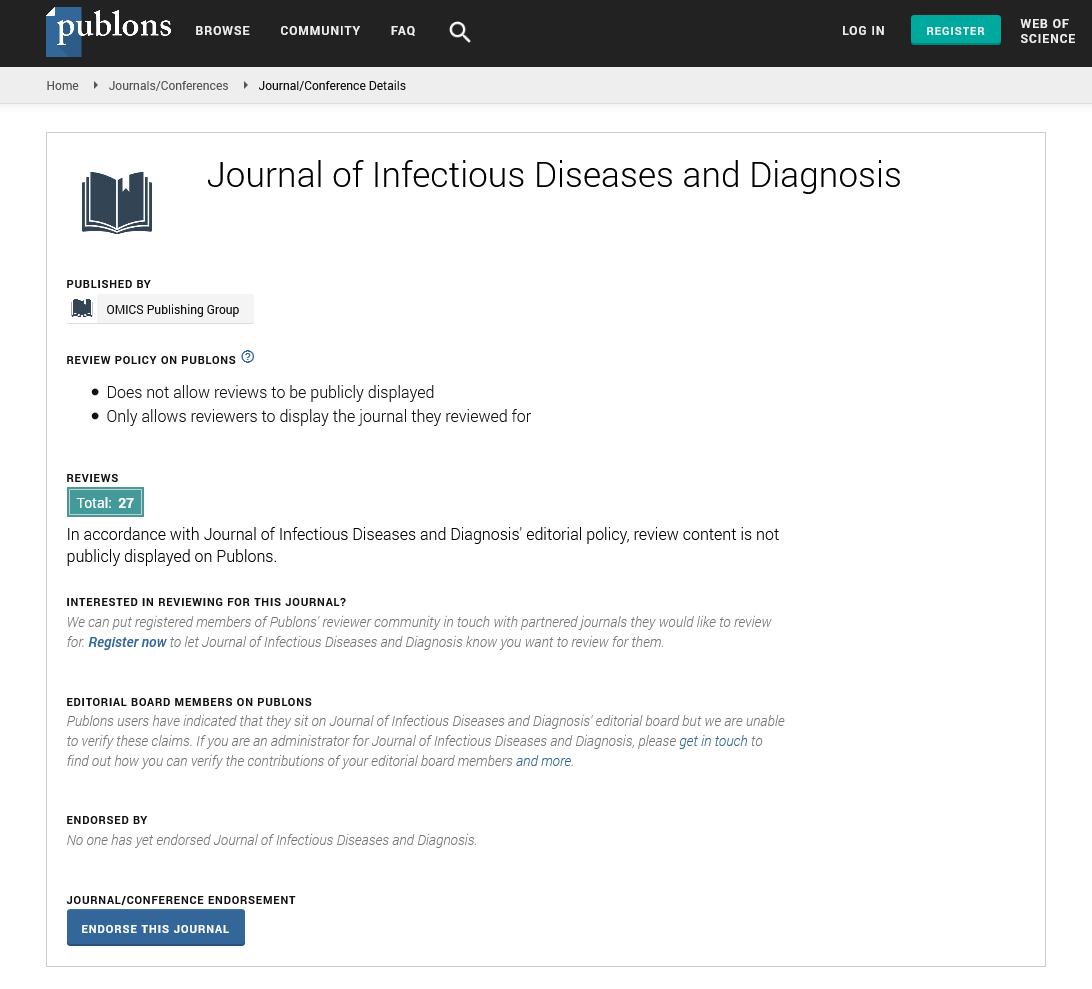Indexed In
- RefSeek
- Hamdard University
- EBSCO A-Z
- Publons
- Euro Pub
- Google Scholar
Useful Links
Share This Page
Journal Flyer

Open Access Journals
- Agri and Aquaculture
- Biochemistry
- Bioinformatics & Systems Biology
- Business & Management
- Chemistry
- Clinical Sciences
- Engineering
- Food & Nutrition
- General Science
- Genetics & Molecular Biology
- Immunology & Microbiology
- Medical Sciences
- Neuroscience & Psychology
- Nursing & Health Care
- Pharmaceutical Sciences
Opinion Article - (2022) Volume 7, Issue 5
Latent Tuberculosis Infection in HIV-Infected Adults
Hong Lu*Received: 02-Sep-2022, Manuscript No. JIDD-22-18513; Editor assigned: 06-Sep-2022, Pre QC No. JIDD-22-18513 (PQ); Reviewed: 20-Sep-2022, QC No. JIDD-22-18513; Revised: 27-Sep-2022, Manuscript No. JIDD-22-18513 (R); Published: 04-Oct-2022, DOI: 10.35248/2576-389X.22.07.184
About the Study
Between 2015 and 2035, the World Health Organization (WHO) End Tuberculosis Strategy calls for a 90% reduction in Tuberculosis (TB) deaths and an 80% reduction in the incidence rate. In addition to treating patients with active disease, the 2018 WHO guidelines recognize the need for high-burden countries to implement outreach and treatment for the most vulnerable patients with Latent Tuberculosis Infection (LTBI). The Democratic Republic of the Congo (DR Congo) is one of the countries with the highest TB burden. However, more data on LTBI is required for effective disease policy and strategy. As a result, the goal of this study is to estimate the prevalence of LTBI in HIV-infected adults in Kinshasa, Democratic Republic of the Congo.
The World Health Organization's End Tuberculosis Strategy, which aims to control and eliminate Tuberculosis (TB) worldwide, includes the diagnosis and treatment of Latent Tuberculosis Infection (LTBI). The goal of this strategy is to reduce the global incidence of tuberculosis to less than 10 per 100,000 people by 2035. In addition to treating patients with active TB, the World Health Organization (WHO) guidelines for 2018 emphasize the need for high-burden countries to implement awareness-raising and treatment activities for the most vulnerable patients with latent TB infection.
According to the World Health Organization, 10 million new cases and 1.3 million deaths from tuberculosis occurred in 2017. 9% of the 10 million TB cases were infected with the Human Immunodeficiency Virus (HIV). In 2015, an estimated 10.4 million new TB cases and 1.8 million deaths were recorded worldwide, with HIV patients accounting for 1.2 million (11%) of all new TB cases. Tuberculosis is still the leading cause of death in HIV-positive people, particularly in Sub-Saharan Africa (SSA), where it accounts for half of all HIV-related deaths. It is estimated that approximately one-third of the global population is latently infected with Mycobacterium tuberculosis and thus has the potential to develop active TB. Latent tuberculosis infection is extremely common in developing countries and is a major impediment to global TB control. Identifying people with LTBI will increase screening rates and help with TB control.
Several factors increase the risk of active TB by facilitating the reactivation of remote LTBI or promoting the progression of an infection recently contracted due to active disease. HIV infection, recent contact with an infectious patient, initiation of Anti-Tumor Necrosis Factor (TNF) treatment, dialysis, organ or hematologic transplantation, silicosis, incarceration, homelessness, drug addiction, and malnutrition are all risk factors. In 1998, WHO recommended that HIV-infected individuals be tested for LTBI in order to begin prophylactic treatment?
The Tuberculin Skin Test (TST) and the Gamma Interferon (IFN-ɣ) release assay are two tests used to diagnose LTBI. These tests are adequate but not perfect. They are indirect markers of M. tuberculosis exposure and represent a cellular immune response to M. tuberculosis. There is no gold standard for LTBI diagnosis. Both the TST and the Interferon-Gamma Release Assays (IGRAs) have low predictive value for progression to active TB in immune-compromised patients. There are several known limitations to the TST. False-positive and false-negative outcomes are possible. False-positive results are caused by two major factors: (a) Non tuberculosis Mycobacterium (NTM) infection and (b) prior Bacillus Calmette-Guerin (BCG) vaccination. False-negative TST results can occur due to limited sensitivity in specific patient subgroups, such as immune compromised individuals due to medical conditions such as HIV infection and malnutrition, or due to immunosuppressive medication ingestion. Because they are not encoded in the genomes of any BCG vaccine strains or most species of NTM other than Mycobacterium marinum, Mycobacterium kansasii, Mycobacterium szulgai, and Mycobacterium flavescens, IGRAs are more specific than TST (Purified Protein Derivative (PPD) for M. tuberculosis. As a result, most infections with NTMs that cause false positives in TSTs appear to have no effect on IGRAs. As a result, infection with M. marinum or M. kansasii, which express ESAT-6 or CFP-10, has been shown to produce positive IGRA results, as has the TST. There is some evidence of cross-reactivity between M. tuberculosis and M. leprae ESAT-6 and CFP-10, but the clinical significance of this in settings where leprosy and TB are endemic (e.g., India and Brazil) is unknown.
The high burden of TB infection in the DR Congo, as in most SSA countries, contrasts with a scarcity of data on the prevalence of LTBI, which is increasingly regarded as a critical step in TB control. This situation emphasizes the importance of conducting studies in SSA countries to provide information for effective TB control.
The current study aims to assess the concordance between the QuantiFERON TB Gold Plus (QFT-Plus) interferon gamma release assay and the TUBERCULIN skin test and to determine the prevalence of LTBI in HIV-infected adults in Kinshasa, DR Congo. In Kinshasa, the prevalence of LTBI in HIV-infected adults is high. As a result, active TB screening in HIV-related health facilities is urgently needed.
Citation: Lu H (2022) Latent Tuberculosis Infection in HIV-Infected Adults. J Infect Dis Diagn. 7:184.
Copyright: © 2022 Lu H. This is an open-access article distributed under the terms of the Creative Commons Attribution License, which permits unrestricted use, distribution, and reproduction in any medium, provided the original author and source are credited.

